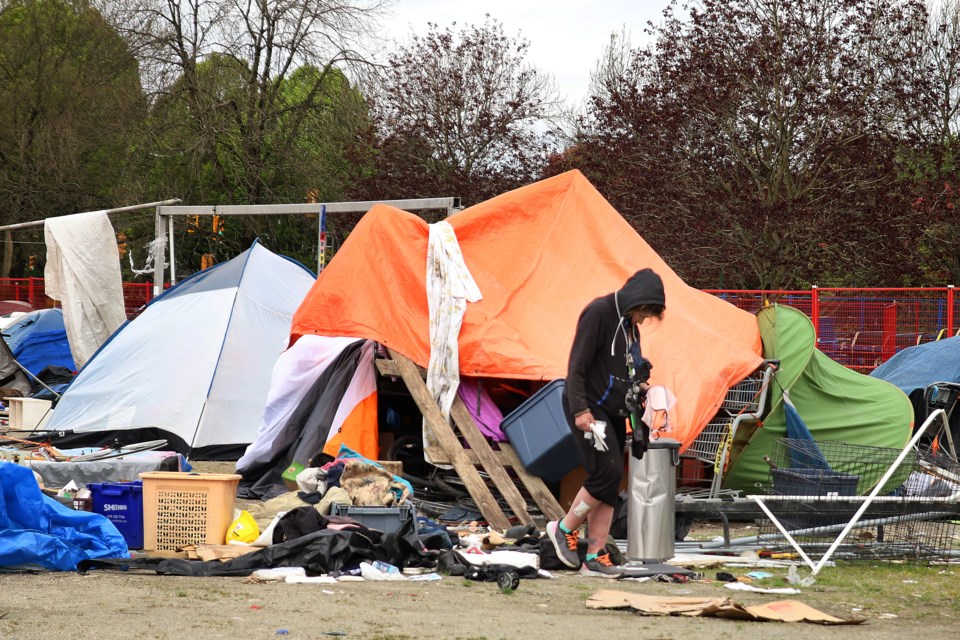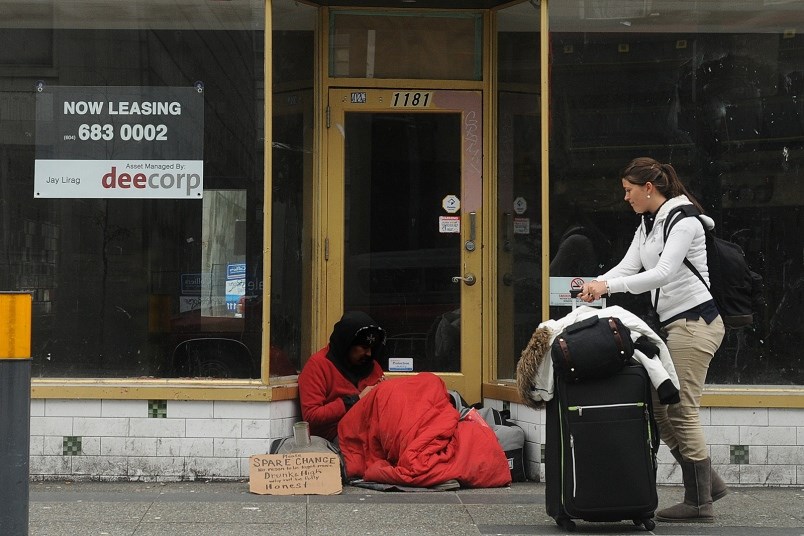Column: 12th&Cambie
If you spent any time in the city this week, you likely came across a homeless person.
It wasn’t always this way, as housing advocates who have been around longer than I have can attest.
Coun. Jean Swanson has reminded me a few times over the years that her friend, Sheila Baxter, published a book in 1991 titled, “Under the viaduct: homeless in beautiful B.C.”
In doing the research, Baxter had some difficulty locating homeless people.
Swanson shared this anecodote last year during an interview related to the city releasing results of the annual homeless count, which showed there were 2,095 people either living in a shelter or on the street.
“She actually had to go out and search for homeless people to interview for the book,” Swanson said.
“We were talking about it a while back and she said she thought maybe there was about a tenth as many homeless people back then as there are now.”
Why?
The reasons are many and depend on who you talk to.
But they include affordability, a low vacancy rate, expensive rent, low welfare rates, problems related to the province’s foster care system, inadequate transition programs from prisons and hospitals, trauma and lack of services to properly treat people living with a mental illness or addiction, or both.
Swanson, who is in her 70s, recalled social housing used to be affordable for low-income people. So were single-room-occupancy hotels. Welfare rates were high enough for a person to pay rent and eat, too, she added.
Since my interview with Swanson, city housing staff updated the homeless count statistics from March 2020 and suggested that an additional 200 people were living on the street, for an estimated total of 750.
Some believe that’s a conservative estimate.
 The Strathcona Park encampment was set up in June 2020. Photo Rob Kruyt/BIV News
The Strathcona Park encampment was set up in June 2020. Photo Rob Kruyt/BIV News Much of the media’s focus on homelessness over the last year has been centred on the Strathcona Park encampment, which appears to be slowly coming to an end, as I reported Wednesday.
But where does that leave the 500 to 600 others living on the streets?
I asked that question this week of David Eby, the provincial minister responsible for housing, and Mayor Kennedy Stewart.
Both pointed to a significant supply of housing, hotels, modular buildings and shelters that have either opened, or will open over the next two years.
It will all be for homeless people and for those at risk of homelessness.
How much are we talking?
More than 1,700 spaces.
And where will it be located?
Across the city.
I got Eby to send me a list, which is on B.C. Housing’s website.
The housing includes yet-to-be-named sites agreed upon under a memorandum of understanding [MOU] reached between the government, City of Â鶹´«Ã½Ó³»and the Â鶹´«Ã½Ó³»park board.
The key commitment in that agreement: “To work with government partners to fund and develop temporary and permanent housing options to reduce the number of unsheltered residents in parks and public spaces to zero and to create flow in established shelter and supportive housing.”
Ambitious, yes.
Conceivable?
Here’s the list to help you decide on an answer:
Supportive housing (which includes access to health care, counselling, etc.) with self-contained units (+535):
• Burns Block, 18 West Hastings St.– 30 units (April 2021)
• 1580 Vernon Dr. – 98 modular housing units (summer 2021)
• 2098 West 7th Ave. – 140 units (2023)
• 1410 East King Edward Ave. – 90 units (2023)
• MOU site #3 (location to be determined) – 59 units (2023)
• MOU site #4 (location to be determined) – 46 units (2023)
• MOU site #5 (location to be determined) – 72 units (2023)
Hotel acquisitions for supportive housing (+522):
• Hosteling International, 1025 Granville St. – 77 beds (retained)
• Ramada Hotel, 435 West Pender St. – 80 beds (new)
• Patricia Hotel, 403 East Hastings St. – 145 beds (100 new spaces, 45 retained)
• 956 Main St. – 22 beds (eight spaces retained, 16 new)
• 1012 Main St. – 32 beds (23 spaces retained, 11 new)
• 103 East Hastings St. (province purchase via federal program; province providing operating funding) – 33 beds (new)
• Days Inn, 2075 Kingsway (city purchase via federal program; province providing operating funding) – 65 beds
• Best Western, 205 Kingsway (city purchase via federal program; province providing operating funding) – 68 beds
New shelter spaces (+220):
• Army & Navy shelter (leased) – 60 beds (May 2021)
• Terminal Street shelter (leased) – 60 beds (May 2021)
• Plaza of Nations (leased) – 40 beds (April 2021, transition from COVID isolation)
• Navigation Centre – 60 beds (summer/fall 2021 TBC)
Deeply affordable/social assistance rate units (+461):
• 124 Dunlevy, Roddan Lodge – 213 units (June 2021)
• 616 East Cordova St., (UGM) – 63 units (Dec. 2021)
• Women’s Transition, Atira (location confidential) – 20 units (July 2021)
• 23-51 West Cordova St., Stanley New Fountain (PHS) – 80 units (April 2022)
• 575 Drake St., Covenant House – 80 units (April 2022)
• Pierce House, Atira – five units (June 2022) COVID isolation spaces
Seven sites (leased) – 432 beds (pre-existing COVID isolation spaces, some available for Strathcona encampment residents)
So, yes, that’s a lot of housing and shelter.
But Eby acknowledged Wednesday that reducing homelessness is not a simple math equation and that it will continue if the reasons people end up on the street — as noted earlier in this piece — aren’t addressed.
“It would be a real mistake for people to believe that they’re not going to see someone sleeping in a doorway or in a tent in a park following our efforts with the City of Vancouver,” he said.
“What I do believe is that we’re going to see a real significant improvement in terms of street homelessness and visible poverty within the next 18 months as we open up these spaces.”
That improvement, he added, will then give government “a bit of breathing room” to continue its efforts to tackle the upstream drivers of homelessness and keep people off the streets, out of shelters — and from living under the viaducts.
Note to self: Schedule interview with Eby in 18 months.
@Howellings



